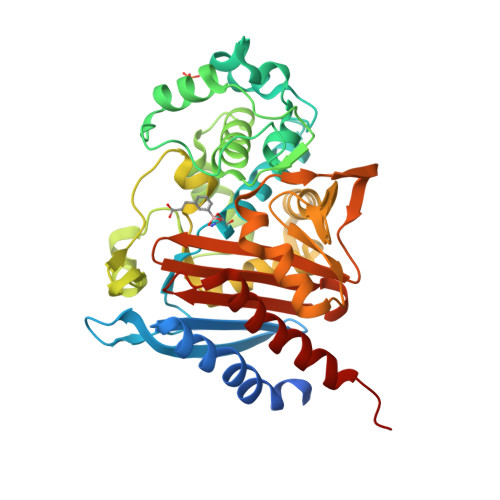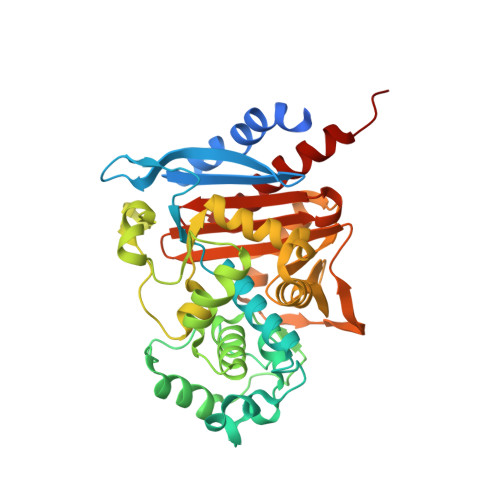Phenylboronic Acids Probing Molecular Recognition against Class A and Class C beta-lactamases.
Linciano, P., Vicario, M., Kekez, I., Bellio, P., Celenza, G., Martin-Blecua, I., Blazquez, J., Cendron, L., Tondi, D.(2019) Antibiotics (Basel) 8
- PubMed: 31574990
- DOI: https://doi.org/10.3390/antibiotics8040171
- Primary Citation of Related Structures:
6S1S - PubMed Abstract:
Worldwide dissemination of pathogens resistant to almost all available antibiotics represent a real problem preventing efficient treatment of infectious diseases. Among antimicrobial used in therapy, β-lactam antibiotics represent 40% thus playing a crucial role in the management of infections treatment. We report a small series of phenylboronic acids derivatives (BAs) active against class A carbapenemases KPC-2 and GES-5, and class C cephalosporinases AmpC. The inhibitory profile of our BAs against class A and C was investigated by means of molecular docking, enzyme kinetics and X-ray crystallography. We were interested in the mechanism of recognition among class A and class C to direct the design of broad serine β-Lactamases (SBLs) inhibitors. Molecular modeling calculations vs GES-5 and crystallographic studies vs AmpC reasoned, respectively, the ortho derivative 2 and the meta derivative 3 binding affinity. The ability of our BAs to protect β-lactams from BLs hydrolysis was determined in biological assays conducted against clinical strains: Fractional inhibitory concentration index (FICI) tests confirmed their ability to be synergic with β-lactams thus restoring susceptibility to meropenem. Considering the obtained results and the lack of cytotoxicity, our derivatives represent validated probe for the design of SBLs inhibitors.
Organizational Affiliation:
Department of Life Sciences, University of Modena and Reggio Emilia, Via Campi 103, 41125 Modena, Italy. p.linciano@unimore.it.




















